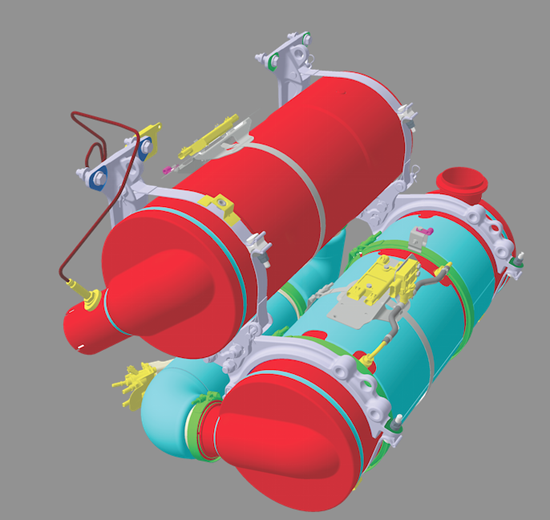
The Diesel Particulate Filter (DPF) is something the trucking industry has been hearing about since 2008. This piece of equipment was to be added to most diesel powered vehicles manufactured after 2009. The reason the DPF is on the trucks is to clean the exhaust of diesel particulates (soot) before it is sent into the air we breathe. The move to start cleaning up the emissions of diesel engines started with Low Sulfur Diesel (LSD, no not that LSD) then went to Ultra Low Sulfur Diesel (ULSD). From there we had to clean it up more but changing the fuel more wasn't going make that happen, along came Exhaust Gas Recirculation (EGR). That did a pretty good job of cleaning up the exhaust, but there came a time we needed to do more.
As we all know having clean air to breathe is a very good thing, so we had two choices. One, put more EGR into an engine, which causes a whole array of new and different problems, or put a filter in the flow of the exhaust as it leaves the engine. Well as far as I’m concerned more EGR was not a good choice. It seems the engineers agree, and a filter is the option that was chosen by engine manufacturers.
The DPF itself created a few problems, weight, it's kind of heavy, and the need for it to be cleaned or it to clean it's self and related computer programming. The weight is what it is, it needs to be as close to the engine as possible so the weight it adds is on the steer axle, creating the need to run a higher load range tire there. Cleaning it called for some really smart people to think about this. If it didn't clean itself it would need to be cleaned almost daily, so that would not be an option. Self-cleaning was the answer, this needed to be done when it got full, but not so full that you could not keep running while it did its thing. The computer programmers got involved and they set it up so the filter would clean itself (do a regen, short for regeneration) based on fuel consumption, the more fuel you use the more regens are done. It’s a matter of getting rid of that soot that is gathered in the filter.
While doing research for this I found out there are several types of filter media including disposable paper filters, typically used on stationary engines in temporary positions that need the emission upgrade due to zoning or other ordinances. The other types of filter media are Cordierite wall flow, the most common, is made of a ceramic material. Silicon Carbide wall flow, the next most common, is made of silicon carbide, who would have guessed. Wall flow filters are designed so that the gasses must flow through the wall of the filter instead of like a flow through filter (muffler). The characteristics of a wall flow filter are high filtration efficiency (up to 95%), broad filtration band (Particles from 0.2-150 microns), high refractory (retains its strength at high temps), high mechanical property (handles stress and strain well), high boiling point (wont melt easily).
There are also Ceramic Fiber Filters, these can be built to meet a specific filtration need or shape and are made of several types of ceramic fibers mixed together to form a porous media. Last but not least, we have Metal Fiber Flow Through filters, metal fibers that are woven into a monolith, these cores can have electrical current passed through them to help heat them in the regen process. The metal fiber filters are more expensive than the Corderite or the Silicone Carbide and cannot be interchanged because of the electrical demand.
Maintenance is required for all filters; some more than others, and the DPF is one that doesn't need much other than that it does itself. And that is done through a process that removes the soot from the filter called Regeneration. This is done two ways, Passively (using the heat of the engines exhaust in normal operation or by adding a catalyst to the filter) or Actively by introducing very high heat into the exhaust system. Soot burns at about 600 degrees Celsius, or about 1100 degrees Fahrenheit. Adding a fuel borne catalyst can reduce this temp. All on board active systems use extra fuel, whether through burning to heat the DPF, or providing extra power for the DPF's electrical system.
That’s why a DPF is on our trucks, what they do, what they are made of and how they clean themselves. The DPF was the answer at the time, but as usual we needed to do better. I'm getting a little long here so we will come back with the next solution, a DPF along with Selective Catalytic Reduction (SCR) and Diesel Exhaust Fluid (DEF) soon.